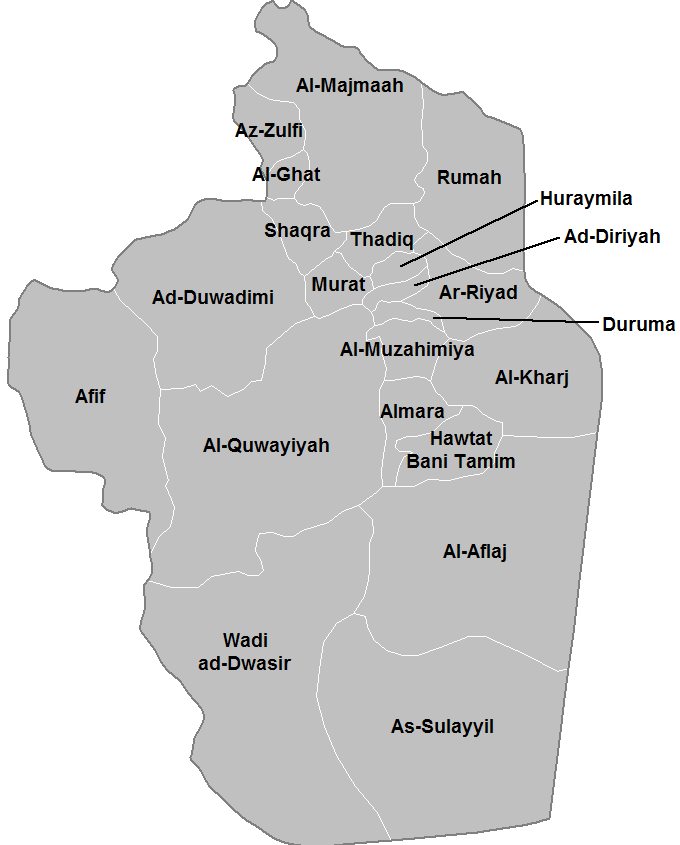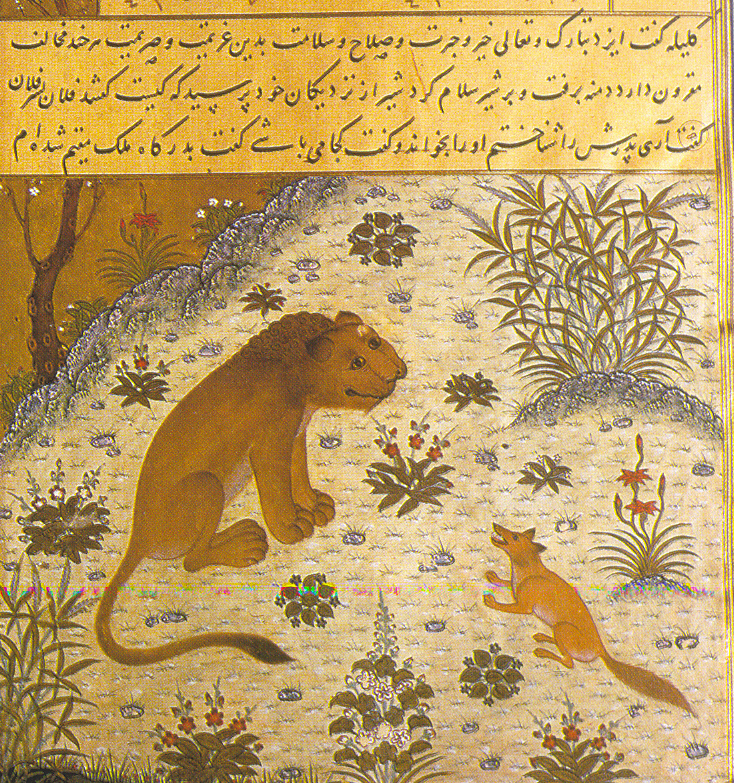|
Layla (town)
Layla ( ar, لیلى) is a town in central Saudi Arabia. It is the principal town of the Al-Aflaj oasis in Riyadh Region, some 330 km south of the capital, Riyadh. It is believed to have been named after Layla of Bani 'Amir, a 7th-century woman from the local tribe of Bani 'Amir who was immortalized in the poetry of her lover Qays ibn Al-Mulawwah. The romance of Qays and Layla is perhaps the most famous romance of Arabic literature, and was chronicled by Persian poet Nizami in ''Layla wal Majnun'' ("Layla and the Madman"). Several tribes have governed the town across two millennia, including tribes of Kaab ibn 'Amir, then 'Uqayl ibn 'Amir and Alshathri. The population of the town and its surrounding villages and hamlets is nearly 76,000, largely consisting of settled Bedouins from the Dawasir tribe. Layla neighbours a dry lake bed called ''Umm Jabal''. A crater on Mars has been named after this town. See also * List of cities and towns in Saudi Arabia * Regions of ... [...More Info...] [...Related Items...] OR: [Wikipedia] [Google] [Baidu] |
Riyadh Province
The Riyadh Province ( ar, منطقة الرياض '), also known as the Riyadh Region, is a region of Saudi Arabia, located in the geographic center of the country. It has an area of and with a 2017 population of 8,216,284, it is the second-largest region by both area and population, behind the Eastern Province and Mecca Region respectively. The capital governorate of the province is the Riyadh Governorate and it is named after the capital of the kingdom, Riyadh, which is the most populous city in the region and the kingdom, with a little less than two-thirds of the population of the region residing within the city. The province was governed for nearly five decades by Prince Salman bin Abdulaziz from 1963 to 2011. Other populous cities in the region include Al Ghat, Zulfi and Majma'ah. Approximately half of the region's area is desert, and it only borders other regions of the kingdom; it has no international borders. The region borders, clockwise from the north, the East ... [...More Info...] [...Related Items...] OR: [Wikipedia] [Google] [Baidu] |
Layla And Majnun
''Layla & Majnun'' ( ar, مجنون ليلى ; '''Layla's Mad Lover) is an old story of Arab origin, about the 7th-century Bedouin poet Qays ibn al-Mulawwah and his ladylove Layla bint Mahdi (later known as Layla al-Aamiriya). "The Layla-Majnun theme passed from Arabic to Persian, Turkish, and Indian languages", through the narrative poem composed in 584/1188 by the Persian poet Nizami Ganjavi, as the third part of his '' Khamsa''. It is a popular poem praising their love story. Qays and Layla fell in love with each other when they were young, but when they grew up Layla's father didn't allow them to be together. Qays became obsessed with her. His tribe Banu 'Amir and the community gave him the epithet of ''Majnūn'' ( "crazy", lit. "possessed by Jinn"). Long before Nizami, the legend circulated in anecdotal forms in Iranian ''akhbar''. The early anecdotes and oral reports about Majnun are documented in '' Kitab al-Aghani'' and Ibn Qutaybah's ''Al-Shi'r wa-l-Shu'ara' ... [...More Info...] [...Related Items...] OR: [Wikipedia] [Google] [Baidu] |
List Of Cities And Towns In Saudi Arabia ...
The following is a list of cities and towns in Saudi Arabia. Alphabetical list of cities and towns References Central Department of Statistics and Information {{Portal, Saudi Arabia Lists of cities by country, Saudi Arabia, List of cities and towns in * Cities A city is a human settlement of notable size.Goodall, B. (1987) ''The Penguin Dictionary of Human Geography''. London: Penguin.Kuper, A. and Kuper, J., eds (1996) ''The Social Science Encyclopedia''. 2nd edition. London: Routledge. It can be def ... [...More Info...] [...Related Items...] OR: [Wikipedia] [Google] [Baidu] |
International Astronomical Union
The International Astronomical Union (IAU; french: link=yes, Union astronomique internationale, UAI) is a nongovernmental organisation with the objective of advancing astronomy in all aspects, including promoting astronomical research, outreach, education, and development through global cooperation. It was founded in 1919 and is based in Paris, France. The IAU is composed of individual members, who include both professional astronomers and junior scientists, and national members, such as professional associations, national societies, or academic institutions. Individual members are organised into divisions, committees, and working groups centered on particular subdisciplines, subjects, or initiatives. As of 2018, the Union had over 13,700 individual members, spanning 90 countries, and 82 national members. Among the key activities of the IAU is serving as a forum for scientific conferences. It sponsors nine annual symposia and holds a triannual General Assembly that sets policy ... [...More Info...] [...Related Items...] OR: [Wikipedia] [Google] [Baidu] |
Mars
Mars is the fourth planet from the Sun and the second-smallest planet in the Solar System, only being larger than Mercury. In the English language, Mars is named for the Roman god of war. Mars is a terrestrial planet with a thin atmosphere (less than 1% that of Earth's), and has a crust primarily composed of elements similar to Earth's crust, as well as a core made of iron and nickel. Mars has surface features such as impact craters, valleys, dunes and polar ice caps. It has two small and irregularly shaped moons, Phobos and Deimos. Some of the most notable surface features on Mars include Olympus Mons, the largest volcano and highest known mountain in the Solar System and Valles Marineris, one of the largest canyons in the Solar System. The Borealis basin in the Northern Hemisphere covers approximately 40% of the planet and may be a large impact feature. Days and seasons on Mars are comparable to those of Earth, as the planets have a similar rotation period a ... [...More Info...] [...Related Items...] OR: [Wikipedia] [Google] [Baidu] |
Dawasir
Al-Dawasir Al-Dawasir (Arabic: الدواسر) i is an Arab tribe whose main base is in the south of Najd in the governorates of Wadi Al-Dawasir, Al-Sulail , Al-Aflaj, and Al-Kharj. The tribe is divided into two groups, namely Al Zayed (Azd) and Taghlib. Al Zayed (Azd) section of divides into Al Salem, and they are Al Wadian, Al-Rajban, Al-Makharim, and Al-Badarin. Taghlib section of Al Dawasir divides into Al Mohamed, Al Amoor, Al Khayilat, Al Ali, Al Lahqban, and Al Masair. The Al-Dawasir tribe combines civilization and nomadism. On the one hand, they are Bedouins who own camels and cattle. On the other hand, they are present with date palms, cities and farms, and their land is one of the most fertile and waterlogged in the Arabian Peninsula. Nomenclature There are various theories surrounding the definition and origin of the term Dawasir, the two most popular ones being that it was derived from either the name of the tribe's purported forebear ''Dosser'' or the eponymous ... [...More Info...] [...Related Items...] OR: [Wikipedia] [Google] [Baidu] |
Bedouins
The Bedouin, Beduin, or Bedu (; , singular ) are nomadic Arab tribes who have historically inhabited the desert regions in the Arabian Peninsula, North Africa, the Levant, and Mesopotamia. The Bedouin originated in the Syrian Desert and Arabian Desert but spread across the rest of the Arab world in West Asia and North Africa after the spread of Islam. The English word ''bedouin'' comes from the Arabic ''badawī'', which means "desert dweller", and is traditionally contrasted with ''ḥāḍir'', the term for sedentary people. Bedouin territory stretches from the vast deserts of North Africa to the rocky sands of the Middle East. They are traditionally divided into tribes, or clans (known in Arabic as ''ʿašāʾir''; or ''qabāʾil'' ), and historically share a common culture of herding camels and goats. The vast majority of Bedouins adhere to Islam, although there are some fewer numbers of Christian Bedouins present in the Fertile Crescent. Bedouins have been referred t ... [...More Info...] [...Related Items...] OR: [Wikipedia] [Google] [Baidu] |
Nizami Ganjavi
Nizami Ganjavi ( fa, نظامی گنجوی, lit=Niẓāmī of Ganja, Azerbaijan, Ganja, translit=Niẓāmī Ganjavī; c. 1141–1209), Nizami Ganje'i, Nizami, or Nezāmi, whose formal name was ''Jamal ad-Dīn Abū Muḥammad Ilyās ibn-Yūsuf ibn-Zakkī'',Mo'in, Muhammad(2006), "Tahlil-i Haft Paykar-i Nezami", Tehran.: p. 2: Some commentators have mentioned his name as “Ilyas the son of Yusuf the son of Zakki the son of Mua’yyad” while others have mentioned that Mu’ayyad is a title for Zakki. Mohammad Moin, rejects the first interpretation claiming that if it were to mean 'Zakki son of Muayyad' it should have been read as 'Zakki i Muayyad' where izafe (-i-) shows the son-parent relationship but here it is 'Zakki Muayyad' and Zakki ends in silence/stop and there is no izafe (-i-). Some may argue that izafe is dropped due to meter constraints but dropping parenthood izafe is very strange and rare. So it is possible that Muayyad was a sobriquet for Zaki or part of his name ... [...More Info...] [...Related Items...] OR: [Wikipedia] [Google] [Baidu] |
Aflaj General Hospital
A qanat or kārīz is a system for transporting water from an aquifer or water well to the surface, through an underground aqueduct; the system originated approximately 3,000 BC in what is now Iran. The function is essentially the same across North Africa and the Middle East but the system operates under a variety of regional names: ''qanat'' or kārīz in Iran, ''foggara'' in Algeria, ''khettara'' in Morocco, ''falaj'' in Oman, ''karez'' in Afghanistan, ''auyoun'' in Saudi Arabia, et al. The largest extant and functional qanat systems are located in Iran, Afghanistan, Oman, the oases of Turfan region of China, Algeria, and Pakistan. This is a system of water supply that allows water to be transported over long distances in hot dry climates without loss of much of the water to evaporation. The system has the advantage of being resistant to natural disasters such as earthquakes and floods, and to deliberate destruction in war. Furthermore, it is almost insensitive to the level ... [...More Info...] [...Related Items...] OR: [Wikipedia] [Google] [Baidu] |
Poet
A poet is a person who studies and creates poetry. Poets may describe themselves as such or be described as such by others. A poet may simply be the creator ( thinker, songwriter, writer, or author) who creates (composes) poems ( oral or written), or they may also perform their art to an audience. The work of a poet is essentially one of communication, expressing ideas either in a literal sense (such as communicating about a specific event or place) or metaphorically. Poets have existed since prehistory, in nearly all languages, and have produced works that vary greatly in different cultures and periods. Throughout each civilization and language, poets have used various styles that have changed over time, resulting in countless poets as diverse as the literature that (since the advent of writing systems) they have produced. History In Ancient Rome, professional poets were generally sponsored by patrons, wealthy supporters including nobility and military officials. F ... [...More Info...] [...Related Items...] OR: [Wikipedia] [Google] [Baidu] |
Persian Literature
Persian literature ( fa, ادبیات فارسی, Adabiyâte fârsi, ) comprises oral compositions and written texts in the Persian language and is one of the world's oldest literatures. It spans over two-and-a-half millennia. Its sources have been within Greater Iran including present-day Iran, Iraq, Afghanistan, the Caucasus, and Turkey, regions of Central Asia (such as Tajikistan) and South Asia where the Persian language has historically been either the native or official language. For example, Rumi, one of the best-loved Persian poets, born in Balkh (in modern-day Afghanistan) or Wakhsh (in modern-day Tajikistan), wrote in Persian and lived in Konya (in modern-day Turkey), at that time the capital of the Seljuks in Anatolia. The Ghaznavids conquered large territories in Central and South Asia and adopted Persian as their court language. There is thus Persian literature from Iran, Mesopotamia, Azerbaijan, the wider Caucasus, Turkey, Pakistan, Bangladesh, India, Tajik ... [...More Info...] [...Related Items...] OR: [Wikipedia] [Google] [Baidu] |




